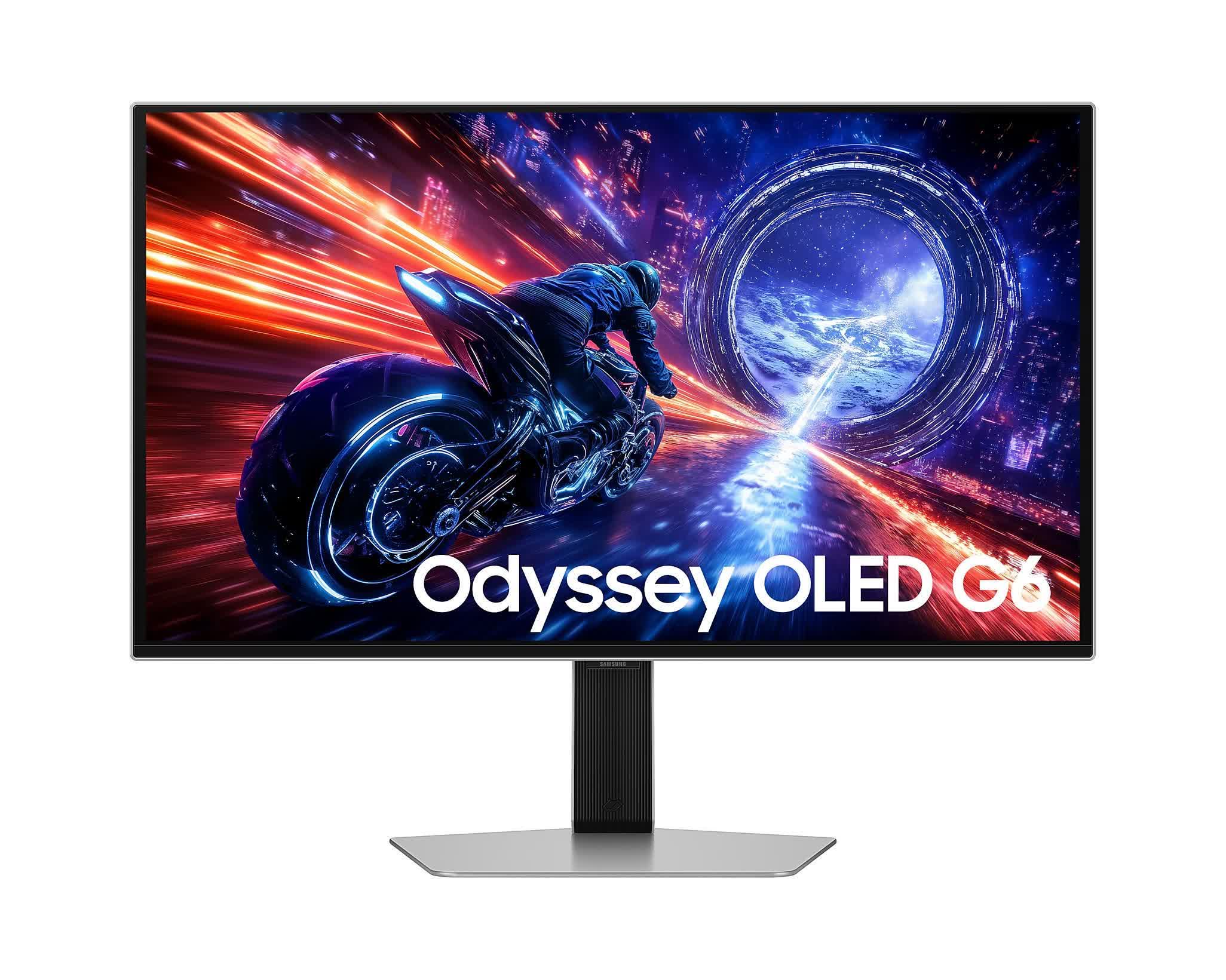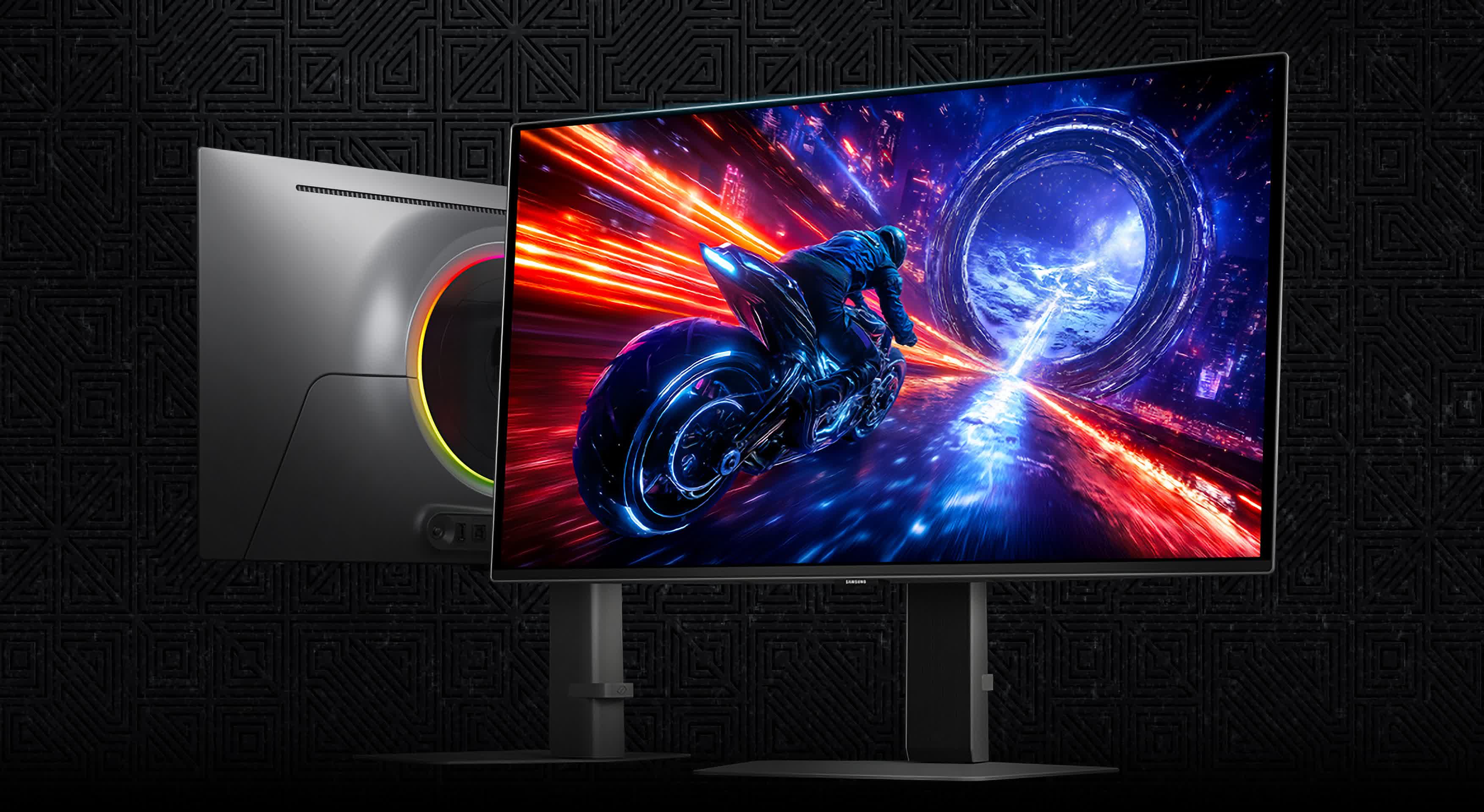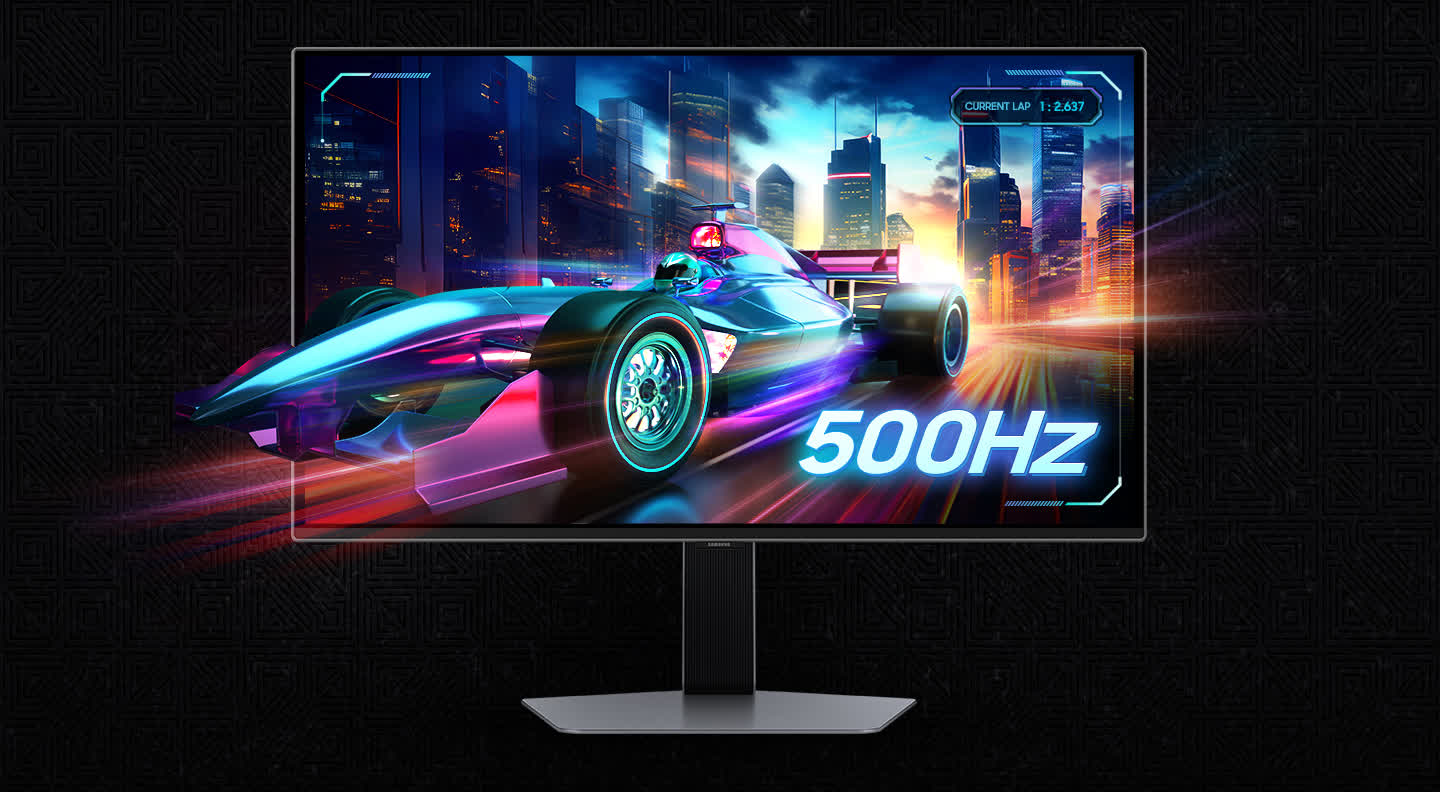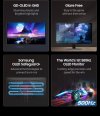Forward-looking: Gaming monitors have been locked in a high refresh rate arms race for many years. First with IPS, TN, and VA panel tech, and now that race has shifted to OLED. Samsung is the first to reach a new milestone with the Odyssey OLED G6. This cutting-edge QHD display features a unique cooling system and other features to prevent overheating and burn-in.
The Samsung Odyssey OLED G6 is the world's first 500Hz OLED gaming monitor, now available in Singapore, Thailand, Vietnam, and Malaysia with rollouts in other countries expected later this year.
The 27-inch Odyssey G6 is also among the first monitors to hit 500Hz at 1440p resolution. Reports about this monitor emerged late last year, shortly after Asus launched its 480Hz OLED ROG Swift PG27AQDP, which is one of TechSpot's top picks for 1440p QHD monitors. While both Samsung and ViewSonic teased 500Hz QHD OLED displays earlier this year, Samsung has been the first to bring one to market.
Also check out: Why Refresh Rates Matter: From 30Hz to 540Hz

Supporting both Nvidia G-Sync and AMD FreeSync Premium Pro, the Odyssey G6 features an ultra-fast 0.03ms gray-to-gray (GTG) response time. It's certified with VESA DisplayHDR True Black 500 and boasts a peak brightness of 1,000 nits. With Pantone Validation, the monitor accurately displays over 2,100 colors and 110 skin tone shades.
Samsung's OLED Safeguard+ cooling system combines thermal modulation and heat pipes, which the company claims evaporate and dissipate heat five times faster than conventional graphite sheets. The monitor also detects static elements like logos or taskbars and selectively dims those pixels to help prevent burn-in.
Shipments for the Odyssey OLED G6 will begin as soon as next week on May 18, with pre-orders starting at $1,488.
As 240Hz remains the standard for 4K gaming monitors and manufacturers begin hitting 500Hz at 1440p, 1080p screens are pushing the boundaries even further. Acer and MSI have recently unveiled 600Hz models, while the Koorui G7 reaches an astonishing 750Hz.
Meanwhile, TCL previewed what may be the next leap forward nearly a year ago: a 1,000Hz 4K LCD panel. The project is likely still in the prototype stage, as cables capable of transmitting 4K at 1,000Hz are not yet commercially available. However, 1080p and 1440p displays might realistically achieve that refresh rate by 2027.
While many users already find 120Hz or 240Hz refresh rates impressive, reaching 360Hz or 540Hz can substantially improve motion clarity. Depending on the type of game, fast-moving objects become much clearer as motion blur drops significantly. As the standard refresh rates in affordable monitors continues to rise, most gamers might eventually return to the smoothness they experienced decades ago on high-refresh CRTs.
Samsung's Odyssey OLED G6 is the world's first 500Hz OLED gaming monitor




